Athens ( ATH-inz; Greek: Αθήνα, romanized: Athína, pronounced [aˈθina] ; Ancient Greek: Ἀθῆναι, romanized: Athênai, pronounced [atʰɛ̂ːnai̯]) is a major coastal urban area in the Mediterranean, and it is both the capital and the largest city of Greece. Athens is also the capital of the Attica region and is the southernmost capital on the European mainland. With its urban area's population numbering over three million, it is also the eighth largest urban area in...Read more
Athens ( ATH-inz; Greek: Αθήνα, romanized: Athína, pronounced [aˈθina] ; Ancient Greek: Ἀθῆναι, romanized: Athênai, pronounced [atʰɛ̂ːnai̯]) is a major coastal urban area in the Mediterranean, and it is both the capital and the largest city of Greece. Athens is also the capital of the Attica region and is the southernmost capital on the European mainland. With its urban area's population numbering over three million, it is also the eighth largest urban area in the European Union. The Municipality of Athens (also City of Athens), which constitutes a small administrative unit of the entire urban area, had a population of 643,452 (2021) within its official limits, and a land area of 38.96 km2 (15.04 sq mi).
Athens is one of the world's oldest cities, with its recorded history spanning over 3,400 years, and its earliest human presence beginning somewhere between the 11th and 7th millennia BC. According to Greek mythology the city was named after Athena, the ancient Greek goddess of wisdom, but modern scholars generally agree that goddess took her name after the city. Classical Athens was one of the most powerful city-states in ancient Greece. It was a centre for democracy, the arts, education and philosophy, and was highly influential throughout the European continent, particularly in Ancient Rome. For this reason, it is often regarded as the cradle of Western civilization and the birthplace of democracy in its own right independently from the rest of Greece.
In modern times, Athens is a huge cosmopolitan metropolis and central to economic, financial, industrial, maritime, political and cultural life in Greece. It is a Beta-status global city according to the Globalization and World Cities Research Network, and is one of the biggest economic centers in Southeastern Europe. It also has a large financial sector, and its port Piraeus is both the 2nd busiest passenger port in Europe, and the 13th largest container port in the world. The Athens metropolitan area or Greater Athens extends beyond its administrative municipal city limits as well as its urban agglomeration, with a population of 3,638,281 (2021) over an area of 2,928.717 km2 (1,131 sq mi).
The heritage of the Classical Era is still evident in the city, represented by ancient monuments, and works of art, the most famous of all being the Parthenon, considered a key landmark of early Western culture. The city also retains Roman, Byzantine and a smaller number of Ottoman monuments, while its historical urban core features elements of continuity through its millennia of history. Athens is home to two UNESCO World Heritage Sites, the Acropolis of Athens and the medieval Daphni Monastery. Athens is also home to several museums and cultural institutions, such as the National Archeological Museum, featuring the world's largest collection of ancient Greek antiquities, the Acropolis Museum, the Museum of Cycladic Art, the Benaki Museum, and the Byzantine and Christian Museum. Athens was the host city of the first modern-day Olympic Games in 1896, and 108 years later it hosted the 2004 Summer Olympics, making it one of five cities to have hosted the Summer Olympics on multiple occasions.
Kingdom of Athens 1556 BC–1068 BC
City-state of Athens 1068 BC–322 BC
Hellenic League 338 BC–322 BC
Kingdom of Macedonia 322 BC–148 BC
Roman Republic 146 BC–27 BC
Roman Empire 27 BC–395 AD![]() Eastern Roman Empire 395–1205
Eastern Roman Empire 395–1205![]() Duchy of Athens 1205–1458
Duchy of Athens 1205–1458![]() Ottoman Empire 1458–1822, 1827–1832
Ottoman Empire 1458–1822, 1827–1832![]() Greece 1822–1827, 1832–present
Greece 1822–1827, 1832–present
The oldest known human presence in Athens is the Cave of Schist, which has been dated to between the 11th and 7th millennia BC.[1] Athens has been continuously inhabited for at least 5,000 years (3000 BC).[2][3] By 1400 BC, the settlement had become an important centre of the Mycenaean civilization, and the Acropolis was the site of a major Mycenaean fortress, whose remains can be recognised from sections of the characteristic Cyclopean walls.[4] Unlike other Mycenaean centers, such as Mycenae and Pylos, it is not known whether Athens suffered destruction in about 1200 BC, an event often attributed to a Dorian invasion, and the Athenians always maintained that they were pure Ionians with no Dorian element. However, Athens, like many other Bronze Age settlements, went into economic decline for around 150 years afterwards.[5] Iron Age burials, in the Kerameikos[6] and other locations, are often richly provided for and demonstrate that from 900 BC onwards Athens was one of the leading centres of trade and prosperity in the region.[7]
 The ruins of the Temple of Olympian Zeus, conceived by the sons of Peisistratus
The ruins of the Temple of Olympian Zeus, conceived by the sons of PeisistratusBy the sixth century BC, widespread social unrest led to the reforms of Solon. These would pave the way for the eventual introduction of democracy by Cleisthenes in 508 BC. Athens had by this time become a significant naval power with a large fleet, and helped the rebellion of the Ionian cities against Persian rule. In the ensuing Greco-Persian Wars Athens, together with Sparta, led the coalition of Greek states that would eventually repel the Persians, defeating them decisively at Marathon in 490 BC, and crucially at Salamis in 480 BC. However, this did not prevent Athens from being captured and sacked twice by the Persians within one year, after a heroic but ultimately failed resistance at Thermopylae by Spartans and other Greeks led by King Leonidas,[8] after both Boeotia and Attica fell to the Persians.
 Delian League under the leadership of Athens before the Peloponnesian War in 431 BC
Delian League under the leadership of Athens before the Peloponnesian War in 431 BCThe decades that followed became known as the Golden Age of Athenian democracy, during which time Athens became the leading city of Ancient Greece, with its cultural achievements laying the foundations for Western civilization.[9][10] The playwrights Aeschylus, Sophocles and Euripides flourished in Athens during this time, as did the historians Herodotus and Thucydides, the physician Hippocrates, and the philosopher Socrates. Guided by Pericles, who promoted the arts and fostered democracy, Athens embarked on an ambitious building program that saw the construction of the Acropolis of Athens (including the Parthenon), as well as empire-building via the Delian League. Originally intended as an association of Greek city-states to continue the fight against the Persians, the league soon turned into a vehicle for Athens's own imperial ambitions. The resulting tensions brought about the Peloponnesian War (431–404 BC), in which Athens was defeated by its rival Sparta.[11]
 The Parthenon on the Acropolis hill in Athens
The Parthenon on the Acropolis hill in AthensBy the mid-4th century BC, the northern Greek kingdom of Macedon was becoming dominant in Athenian affairs. In 338 BC the armies of Philip II defeated an alliance of some of the Greek city-states including Athens and Thebes at the Battle of Chaeronea. Later, under Rome, Athens was given the status of a free city because of its widely admired schools. In the second century AD, The Roman emperor Hadrian, himself an Athenian citizen,[12] ordered the construction of a library, a gymnasium, an aqueduct which is still in use, several temples and sanctuaries, a bridge and financed the completion of the Temple of Olympian Zeus.
 Tower of the Winds in the Roman Agora, the second commercial centre of ancient Athens
Tower of the Winds in the Roman Agora, the second commercial centre of ancient AthensIn the early 4th century AD, the Eastern Roman Empire began to be governed from Constantinople, and with the construction and expansion of the imperial city, many of Athens's works of art were taken by the emperors to adorn it. The Empire became Christianized, and the use of Latin declined in favour of exclusive use of Greek; in the Roman imperial period, both languages had been used. In the later Roman period, Athens was ruled by the emperors continuing until the 13th century, its citizens identifying themselves as citizens of the Roman Empire ("Rhomaioi"). The conversion of the empire from paganism to Christianity greatly affected Athens, resulting in reduced reverence for the city.[3] Ancient monuments such as the Parthenon, Erechtheion and the Hephaisteion (Theseion) were converted into churches. As the empire became increasingly anti-pagan, Athens became a provincial town and experienced fluctuating fortunes.
The city remained an important center of learning, especially of Neoplatonism—with notable pupils including Gregory of Nazianzus, Basil of Caesarea and emperor Julian (r. 355–363)—and consequently a center of paganism. Christian items do not appear in the archaeological record until the early 5th century.[13] The sack of the city by the Herules in 267 and by the Visigoths under their king Alaric I (r. 395–410) in 396, however, dealt a heavy blow to the city's fabric and fortunes, and Athens was henceforth confined to a small fortified area that embraced a fraction of the ancient city.[13] The emperor Justinian I (r. 527–565) banned the teaching of philosophy by pagans in 529,[14] an event whose impact on the city is much debated,[13] but is generally taken to mark the end of the ancient history of Athens. Athens was sacked by the Slavs in 582, but remained in imperial hands thereafter, as highlighted by the visit of the emperor Constans II (r. 641–668) in 662/3 and its inclusion in the Theme of Hellas.[13]
Middle Ages The Daphni Monastery, an eleventh-century Byzantine monastery northwest of central Athens designated UNESCO World Heritage Sites
The Daphni Monastery, an eleventh-century Byzantine monastery northwest of central Athens designated UNESCO World Heritage SitesThe city was threatened by Saracen raids in the 8th–9th centuries—in 896, Athens was raided and possibly occupied for a short period, an event which left some archaeological remains and elements of Arabic ornamentation in contemporary buildings[15]—but there is also evidence of a mosque existing in the city at the time.[13] In the great dispute over Byzantine Iconoclasm, Athens is commonly held to have supported the iconophile position, chiefly due to the role played by Empress Irene of Athens in the ending of the first period of Iconoclasm at the Second Council of Nicaea in 787.[13] A few years later, another Athenian, Theophano, became empress as the wife of Staurakios (r. 811–812).[13]
Invasion of the empire by the Turks after the Battle of Manzikert in 1071, and the ensuing civil wars, largely passed the region by and Athens continued its provincial existence unharmed. When the Byzantine Empire was rescued by the resolute leadership of the three Komnenos emperors Alexios, John and Manuel, Attica and the rest of Greece prospered. Archaeological evidence tells us that the medieval town experienced a period of rapid and sustained growth, starting in the 11th century and continuing until the end of the 12th century.
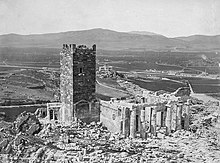 Photograph of the Frankish Tower of the Acropolis of Athens in 1874, with the ruins of the Propylaea and view west over the Athenian plain towards Mount Aigaleo before it demolished in 1875
Photograph of the Frankish Tower of the Acropolis of Athens in 1874, with the ruins of the Propylaea and view west over the Athenian plain towards Mount Aigaleo before it demolished in 1875The Agora (marketplace) had been deserted since late antiquity, began to be built over, and soon the town became an important centre for the production of soaps and dyes. The growth of the town attracted the Venetians, and various other traders who frequented the ports of the Aegean, to Athens. This interest in trade appears to have further increased the economic prosperity of the town.
The 11th and 12th centuries were the Golden Age of Byzantine art in Athens. Almost all of the most important Middle Byzantine churches in and around Athens were built during these two centuries, and this reflects the growth of the town in general. However, this medieval prosperity was not to last. In 1204, the Fourth Crusade conquered Athens and the city was not recovered from the Latins before it was taken by the Ottoman Turks. It did not become Greek in government again until the 19th century.
From 1204 until 1458, Athens was ruled by Latins in three separate periods, following the Crusades. The "Latins", or "Franks", were western Europeans and followers of the Latin Church brought to the Eastern Mediterranean during the Crusades. Along with rest of Byzantine Greece, Athens was part of the series of feudal fiefs, similar to the Crusader states established in Syria and on Cyprus after the First Crusade. This period is known as the Frankokratia.
Ottoman Athens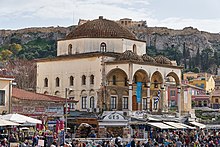 Tzistarakis Mosque, an Ottoman mosque, built in 1759, in Monastiraki Square
Tzistarakis Mosque, an Ottoman mosque, built in 1759, in Monastiraki Square The second Parthenon mosque in the ruined Parthenon, which was destroyed by a Venetian bombardment in 1687, depicted by Pierre Peytier in the 1830s
The second Parthenon mosque in the ruined Parthenon, which was destroyed by a Venetian bombardment in 1687, depicted by Pierre Peytier in the 1830sThe first Ottoman attack on Athens, which involved a short-lived occupation of the town, came in 1397, under the Ottoman generals Yaqub Pasha and Timurtash.[15] Finally, in 1458, Athens was captured by the Ottomans under the personal leadership of Sultan Mehmed II.[15] As the Ottoman Sultan rode into the city, he was greatly struck by the beauty of its ancient monuments and issued a firman (imperial edict) forbidding their looting or destruction, on pain of death. The Parthenon was converted into the main mosque of the city.[3]
Under Ottoman rule, Athens was denuded of any importance and its population severely declined, leaving it as a "small country town" (Franz Babinger).[15] From the early 17th century, Athens came under the jurisdiction of the Kizlar Agha, the chief black eunuch of the Sultan's harem. The city had originally been granted by Sultan Ahmed I (r. 1603–1617) to Basilica, one of his favourite concubines, who hailed from the city, in response of complaints of maladministration by the local governors. After her death, Athens came under the purview of the Kizlar Agha.[16]
The Turks began a practice of storing gunpowder and explosives in the Parthenon and Propylaea. In 1640, a lightning bolt struck the Propylaea, causing its destruction.[17] In 1687, during the Morean War, the Acropolis was besieged by the Venetians under Francesco Morosini, and the temple of Athena Nike was dismantled by the Ottomans to fortify the Parthenon. A shot fired during the bombardment of the Acropolis caused a powder magazine in the Parthenon to explode (26 September), and the building was severely damaged, giving it largely the appearance it has today. The Venetian occupation of Athens lasted for six months, and both the Venetians and the Ottomans participated in the looting of the Parthenon. One of its western pediments was removed, causing even more damage to the structure.[3][15] During the Venetian occupation, the two mosques of the city were converted into Catholic and Protestant churches, but on 9 April 1688 the Venetians abandoned Athens again to the Ottomans.[15]
Modern history The Entry of King Otto in Athens, Peter von Hess, 1839
The Entry of King Otto in Athens, Peter von Hess, 1839In 1822, a Greek insurgency captured the city, but it fell to the Ottomans again in 1826 (though Acropolis held till June 1827). Again the ancient monuments suffered badly. The Ottoman forces remained in possession until March 1833, when they withdrew. At that time, the city (as throughout the Ottoman period) had a small population of an estimated 400 houses, mostly located around the Acropolis in the Plaka.
Following the Greek War of Independence and the establishment of the Greek Kingdom, Athens was chosen to replace Nafplio as the second capital of the newly independent Greek state in 1834, largely because of historical and sentimental reasons.[18] At the time, after the extensive destruction it had suffered during the war of independence, it was reduced to a town of about 4,000 people (less than half its earlier population) in a loose swarm of houses along the foot of the Acropolis. The first King of Greece, Otto of Bavaria, commissioned the architects Stamatios Kleanthis and Eduard Schaubert to design a modern city plan fit for the capital of a state.[citation needed]
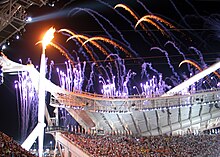 The Olympic Flame at the opening ceremony of the 2004 Summer Olympics
The Olympic Flame at the opening ceremony of the 2004 Summer OlympicsThe first modern city plan consisted of a triangle defined by the Acropolis, the ancient cemetery of Kerameikos and the new palace of the Bavarian king (now housing the Greek Parliament), so as to highlight the continuity between modern and ancient Athens. Neoclassicism, the international style of this epoch, was the architectural style through which Bavarian, French and Greek architects such as Hansen, Klenze, Boulanger or Kaftantzoglou designed the first important public buildings of the new capital.[citation needed] In 1896, Athens hosted the first modern Olympic Games. During the 1920s a number of Greek refugees, expelled from Asia Minor after the Greco-Turkish War and Greek genocide, swelled Athens's population; nevertheless it was most particularly following World War II, and from the 1950s and 1960s, that the population of the city exploded,[citation needed] and Athens experienced a gradual expansion.
In the 1980s, it became evident that smog from factories and an ever-increasing fleet of automobiles, as well as a lack of adequate free space due to congestion, had evolved into the city's most important challenge.[citation needed] A series of anti-pollution measures taken by the city's authorities in the 1990s, combined with a substantial improvement of the city's infrastructure (including the Attiki Odos motorway, the expansion of the Athens Metro, and the new Athens International Airport), considerably alleviated pollution and transformed Athens into a much more functional city. In 2004, Athens hosted the 2004 Summer Olympics.


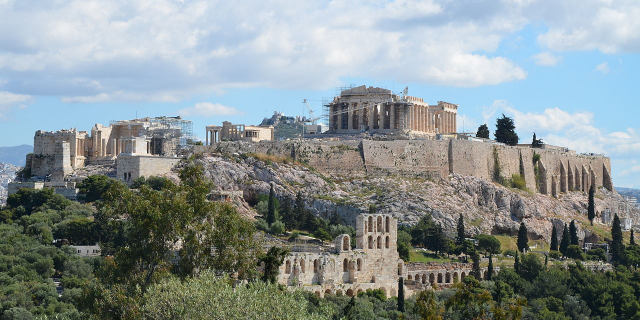



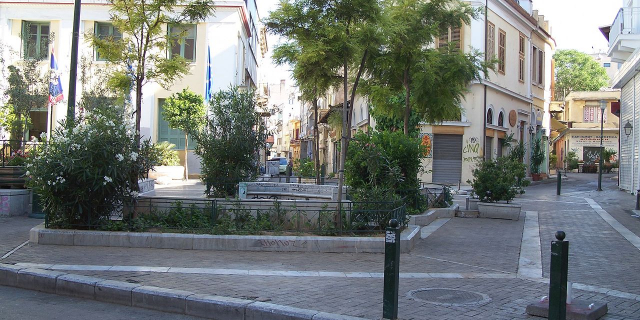






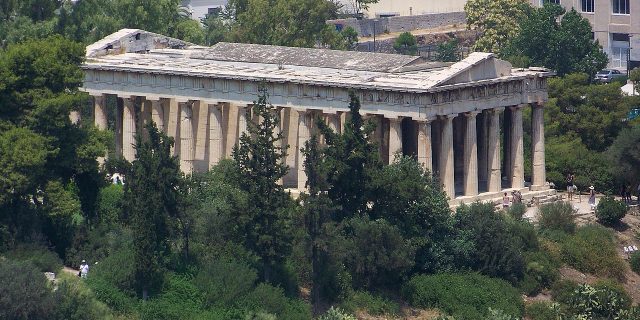

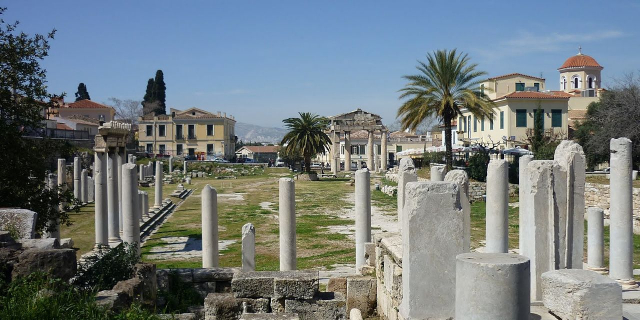
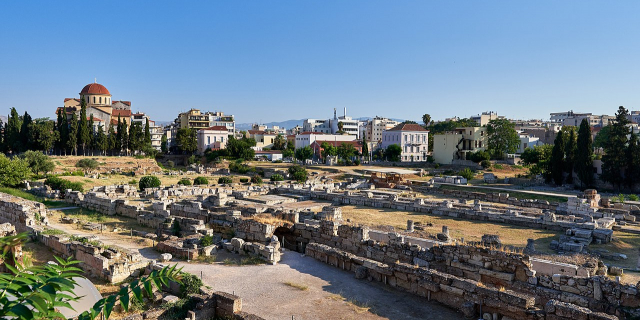
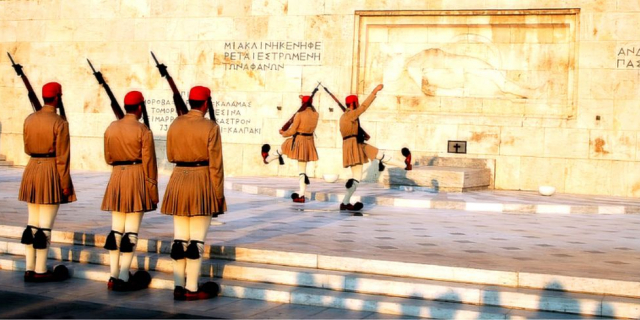


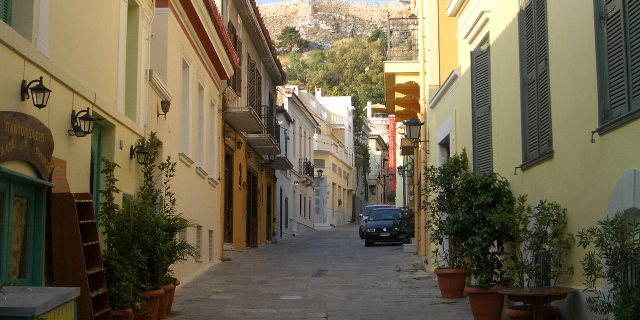










Add new comment